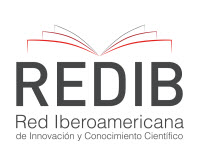Analysis of the coxal fluid of O. brasiliensis tick species by analytic techniques
DOI:
https://doi.org/10.15392/2319-0612.2024.2628Keywords:
EDXRF, INAA, Elemental Composition, Coxal Liquid, Ornithodoros brasiliensisAbstract
The coxal fluid of the tick species Ornithodoros brasiliensis (O. brasiliensis) was subjected to detailed chemical analysis using Instrumental Neutron Activation Analysis (INAA) and Energy Dispersive X-ray Fluorescence (EDXRF). These complementary techniques allowed the identification and quantification of key elements such as sodium (Na), chlorine (Cl), potassium (K), and zinc (Zn), along with others like sulfur (S), phosphorus (P), and iron (Fe). The study demonstrated the consistency between the two analytical methods and revealed significant data about the tick's physiological adaptations related to fluid excretion and blood meal processing. Additionally, the absence of heavy metals in the analyzed samples was confirmed. Understanding the composition of coxal fluid is vital for interpreting metabolic processes and exploring its toxicological potential, given the aggressive nature of O. brasiliensis, known to cause severe health impacts on humans and animals. This research contributes to advancing knowledge about tick biology and supports the development of public health measures against tick-borne hazards.
Downloads
References
[1] MANS, B. J.; KLERK, D.; PIRNAAR, R.; LATIF, A.A. Nuttalliella namaqua: a living fossil and closest relative to the ancestral tick lineage. Plos One, [S.L.], v. 6, n. 8, p. e23675, 17. 2011. DOI: https://doi.org/10.1371/journal.pone.0023675
[2] GUGLIELMONE, A.A.; NAVA, s.; ROBBINS, R.G. Geographic distribution of the hard ticks (Acari: ixodida). Zootaxa, [S.L.], v. 5251, n. 1, p. 1-274, 7. 2023. DOI: https://doi.org/10.11646/zootaxa.5251.1.1
[3] DANTAS-TORRES, F.; MARTINS, T. F.; MUÑOZ-LEAL, S.; ONOFRIO, V.C.; BARROS-BATTESTI, D.M. Ticks (Ixodida: argasidae, ixodidae) of Brazil. Ticks And Tick-Borne Diseases, [S.L.], v. 10, n. 6, p. 101252, 2019. DOI: https://doi.org/10.1016/j.ttbdis.2019.06.012
[4] BOWMAN, A.S.; SAUER, J.R. Tick salivary glands: function, physiology and future. Parasitology, Suppl 129, p 67-81, 2004. DOI: https://doi.org/10.1017/S0031182004006468
[5] ALBERTI, G.; COONS, L.B. Acari: mites. In: Microscopic Anatomy of Invertebrates (Ed. By F.W. Harrison & R.F. Foelix), p. 515-1265. Wiley- Lis, New York. 1999.
[6] SAUER, J.R.; MCSWAIN, J.L.; BOWMAN, A.S.; ESSENBERG, R.C. Tick salivary gland physiology. Annu Ver Entomol, v. 40, p 245, 1995. DOI: https://doi.org/10.1146/annurev.en.40.010195.001333
[7] KAUFMAN, S.E.; KAUFMAN, W.R.; PHILLIPS, J.E. Fluid Balance in the Argasid Tick, Ornithodorus Moubata, Fed on Modified Blood Meals. J Exp Biol, v. 93, n. 1, p 225–242, 1981. DOI: https://doi.org/10.1242/jeb.93.1.225
[8] MCCOY, B.N.; RAFFEL, S.J.; LOPEZ, J.E.; SCHWAN, T.G. Bloodmeal size and spirochete acquisition of Ornithodoros hermsi (Acari: Argasidae) during feeding. J Med Entomol. V. 47 n.6, p 1164-1172, 2010. DOI: https://doi.org/10.1603/ME10175
[9] SONENSHINE, D.E.; ROE, R.M. Biology of Ticks: Volume 1. 2. ed. New York: Oxford University Press, 560 p. ISBN 978-0-19-974405-3 (alk. paper) —ISBN 978-0-19-974406-0 (alk. paper) 2013.
[10] WEYER, F.; Beobachtungen uber das Verhalten des Q-Fieber-Erregers (Coxiella burneti) in der Lederzecke Ornithodoros moubata, Tropenmed Parasitol, p 219-231, 2013
[11] MÁRQUEZ-JIMÉNEZ, F.J.; HIDALGO-PONTIVEROS, A.; CONTRERAS-CHOVA, F.; RODRÍGUEZ-LIÉBANA, J.J.; MUNIAIN-EZCURRA, M.A. Ticks (Acarina: Ixodidae) as vectors and reservoirs of pathogenmicroorganism in Spain. Enferm. Infecc. Microbiol. Clin., v. 23, n.2, p. 94-102, 2005. DOI: https://doi.org/10.1157/13071613
[12] PISSOLATO, J.A. Modulação do líquido coxal do carrapato Ornithodoros brasiliensis (Acari: Argasidae) sobre alguns microganismos. Monografia (Especialização) – Escola Superior do Instituto Butantan, Especialização na Área da Saúde – Biotecnologia para a Saúde – Vacinas e Biofármacos. São Paulo, Brasil, 2023. https://repositorio.butantan.gov.br/handle/butantan/5059
[13] RAMIREZ,D.G.; MARTINS, J. R. ; MARCILI, A ; SOARES, J.F ; ALMEIDA, A.P ; LABRUNA, M. B. ; BARROS-BATTESTI, D. M. . Detection of Rickettsia belli in the tick Ornithodoros brasiliensis (Acari:Argasidae). In: Ticks and Tick-borne Pathogens, 2011, Zaragoza. Ticks and Tick-borne Pathogens International Conference - TTP7, 2011
[14] MARTINS, J.R.; DOYLE, R.L.; BARROS-BATTESTI, D.M.; ONOFRIO, V.C.; GUGLIELMONE, A.A. On the occurrence of Ornithodoros brasiliensis ARAGÃO (Acari: Argasidae) in São Francisco de Paula, RS, Southern Brazil. Neotropical Entomology, v. 40, n. 1, p. 143-144, 2011 DOI: https://doi.org/10.1590/S1519-566X2011000100022
[15] RECK, J.; SOARES, J.F.; TERMIGNONI, C.; LABRUNA, M.B.; MARTINS, J.R. Tick toxicosis in a dog bitten by Ornithodoros brasiliensis. Vet Clin Pathol, v.40, n.3, p 356-360. 2011 DOI: https://doi.org/10.1111/j.1939-165X.2011.00338.x
[16] BARROS-BATTESTI, D.M; ONOFRIO, V.C; NIERI-BASTOS, F.A; SOARES, J.F; MARCILI, A.; FAMADAS, K.M; FACCINI, J.L.H; RAMIREZ, D.G; DOYLE, R.L; MARTINS, J.R; JÚNIOR, J.R; GUGLIELMONE, A.A; LABRUNA, M.B. Ornithodoros brasiliensis Aragão (Acari: argasidae). Zootaxa, v. 3178, n. 1, p. 22, 2012. DOI: https://doi.org/10.11646/zootaxa.3178.1.2
[17] RECK, J.; BANDARRA, P.; PAVARINI, S.; TERMIGNONI, C.; DRIEMEIER, D.; MARTINS, J.R.; GUIMARÃES, J.A. Experimentally induced tick toxicosis in rats bitten by Ornithodoros brasiliensis (Chelicerata: Argasidae): a clínico-pathological characterization. Toxicon, v. 88, p 99-106, 2014. DOI: https://doi.org/10.1016/j.toxicon.2014.06.017
[18] RAMIREZ, D.G.; LANDULFO, G.A.; ONOFRIO, V.C.; SIMONS, S.M.; RECK, J.; MARTINS, J.R.; LABRUNA, M.B.; BARROS-BATTESTI, D.M. Laboratory life cycle of Ornithodoros brasiliensis (Acari: Argasidae): an endemic tick from southern Brazil. Ticks and Tick-Borne Diseases, v.7 n.5, 730-733, 2016. DOI: https://doi.org/10.1016/j.ttbdis.2016.03.001
[19] DALL'AGNOL, B.; SCHOTT, D.; PADILHA, T.; ANTUNES, P.; SOUZA, U.A.; WEBSTER, A.; SOUZA, G.D.; FERREIRA, C.A.S.; RECK, J. Clinical Findings Associated with Ornithodoros brasiliensis Tick Parasitism in Travelers, Southern Brazil. Wilderness Environ Med, v.4, p 437-440, 2019. DOI: https://doi.org/10.1016/j.wem.2019.06.012
[20] RECK, J.; WEBSTER, A.; DALL'AGNOL, B.; PIENAAR, R.; DE CASTRO, M.H.; FEATHERSTON, J.; MANS, B.J. Transcriptomic Analysis of Salivary Glands of Ornithodoros brasiliensis Aragão, 1923, the Agent of a Neotropical Tick-Toxicosis Syndrome in Humans. Front Physiol, 12:725635, 2021 DOI: https://doi.org/10.3389/fphys.2021.725635
Downloads
Published
Issue
Section
Categories
License
Copyright (c) 2024 Cibele Bugno Zamboni, Dalton Nogueira da Silva Giovanni, Simone Michaela Simons

This work is licensed under a Creative Commons Attribution 4.0 International License.
Licensing: The BJRS articles are licensed under a Creative Commons Attribution 4.0 International License, which permits use, sharing, adaptation, distribution and reproduction in any medium or format, as long as you give appropriate credit to the original author(s) and the source, provide a link to the Creative Commons license, and indicate if changes were made. The images or other third party material in this article are included in the article’s Creative Commons license, unless indicated otherwise in a credit line to the material. If material is not included in the article’s Creative Commons license and your intended use is not permitted by statutory regulation or exceeds the permitted use, you will need to obtain permission directly from the copyright holder. To view a copy of this license, visit http://creativecommons.org/licenses/by/4.0/






















